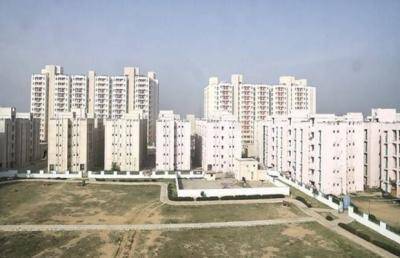The real estate sector has been down and out for about five years, with the last two years being particularly bad on the back of demonetisation and implementation of RERA and GST.
- It promises to be a good time to buy a house for end use but not investment
- But residential realty may not look attractive for investment as there may not be a significant price appreciation
Like most other sectors, FY21 was a roller-coaster ride for real estate. In the first half, sales crashed to almost 36% of the previous six months as per data from online property brokerage firm PropTiger.com. However, in the last six months of FY21, the sector made a commendable recovery.
“The recovery was partly aided by pent-up demand supported by sops rolled out by state governments like stamp duty reduction, cut in construction premium, alignment in circle rates, etc.,” said Mani Rangarajan, group COO, Housing.com, Makaan.com and PropTiger.com.
“In addition to these factors, the growing need for home ownership amid the pandemic also pushed up demand for housing in the last six months,” said Rahul Purohit, head, India sales, Square Yards.
These factors made fence-sitting homebuyers take the plunge. Sales in the second half of FY21 reached around 80% of the sales registered a year before. However, the Maharashtra government has not extended the temporary cut in stamp duty, while the Gurugram administration has increased circle rates at a few locations effective 8 April. Interest rates on home loans have bottomed out (SBI has withdrawn its limited-period offer, hiking the interest rate to 6.95% from 6.70%), plus we are seeing another wave of covid, which may impact construction activity.
Will FY22 continue to provide a conducive environment for homebuyers? Let’s understand some of the factors to consider if you are planning to buy a house.
Ready supply may be hit
Over the past few years, the demand for ready-to-move-in houses have grown substantially. As per the ‘Real Insight Residential Annual Roundup 2020’ report by PropTiger.com, the share of ready-to-move-in properties in total sales have gone up from 7% in 2015 to 21% in 2020.
However, experts say that the supply of such units may be limited. “There are around 70,000-odd ready-to-move-in units available across the top 14 cities, which is lower than the kind of demand the segment is witnessing,” said Samir Jasuja, CEO and founder, PropEquity.
Ramesh Nair, real estate industry expert and former CEO, JLL India, added: “As developers are facing liquidity issues and we are seeing a second covid wave, which may again hinder construction activity, the supply of ready-to-move-in houses may be impacted going forward.”
The preferences of people have also changed post-covid as most of them were forced to work from home. This increased the demand for bigger houses.
New launches came down by around 30% in FY21 compared to FY20. Therefore, the overall supply may be impacted going forward. This may result in prices inching up in some of the segments, especially ready-to-move-in properties.
Cost of buying may go up
The Maharashtra government has decided not to extend the stamp duty cut. However, it has kept the circle rate or ready reckoner rate unchanged for FY22. The stamp duty cut in August 2020 had supported demand immensely. “December 2020 saw an all-time high in registration numbers across the Mumbai Metropolitan Region (MMR), with March 2021 following closely, as buyers took advantage of the reduced stamp duty,” said Jay Goenka, director of real estate firm Dynamix Group.
But homebuyers may not be able to avail the benefits of stamp duty cuts any longer. Reinstating the old stamp duty rate will increase the cost of buying to what it was before the offer. Farshid Cooper, MD of builder Spenta Corporation, added: “Now, by reinstating the 5% stamp duty, we are hoping that the momentum is not slowed down for buying and launching new projects.”
A hike in stamp duty increases the cost. If you were paying ₹3 lakh as stamp duty till 31 March for a house worth ₹1 crore, now you will have to shell out ₹5 lakh.
Nair says prices are unlikely to increase significantly, but it may be possible that developers may not offer similar discounts and freebies as we saw in 2020, especially in the ready-to-move-in segment.
Agrees Aditya Mishra, founder and CEO, Amorqa, a fintech real estate platform: “Some developers have been offering attractive schemes even in the ready-to-move-in segment to cash in on increased demand due to the limited period stamp duty reduction in Maharashtra. Such discounts and freebies may not be available going forward. While in the under-construction segment, developers are offering attractive discounts.”
Rates have bottomed out
Home loan interest rates have bottomed out and are at almost a decade low. SBI had recently taken back its promotional offer and increased the rate to 6.95%. Experts say we may see rates going up in FY22.
“The present condition shows that interest rates may not go down any further. The lowest rates are certainly behind us. As we have seen the likes of HDFC increase their deposit rates, we may see home loan rates going up,” said Madan Sabnavis, chief economist, Care Ratings Ltd.
Adhil Shetty, CEO, BankBazaar.com, added: “In the face of increased government borrowing, the cost of borrowing is set to rise. Consequently, there would be pressure on the banking sector and this can push up borrowing costs across the board. So, there is a strong chance that interest rates might go up.”
Should you buy now?
As interest rates are still at historic lows and prices have remained stable over the past few years, it is a good time to buy a house if you plan to live in it. However, residential realty may not look attractive for investment as there may not be significant price appreciation in the near future. In addition, rental yields have been quite low in the residential sector. If you are planning to invest in realty, you may look at investing in real estate investment trusts (Reits). Reits are more liquid as they are listed on stock exchanges. By using Reits, one can invest in commercial real estate, which enjoys a better rental yield.



































